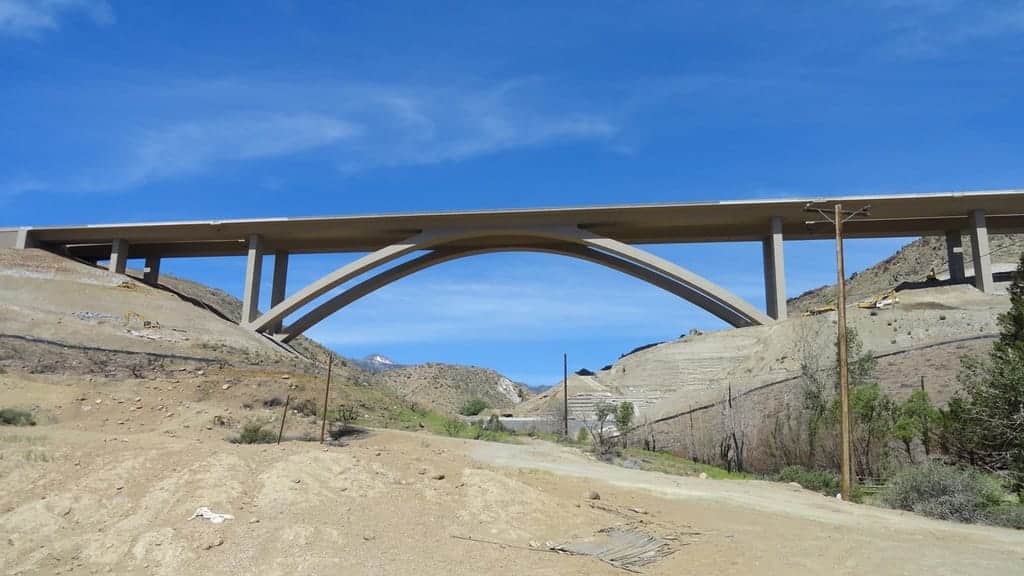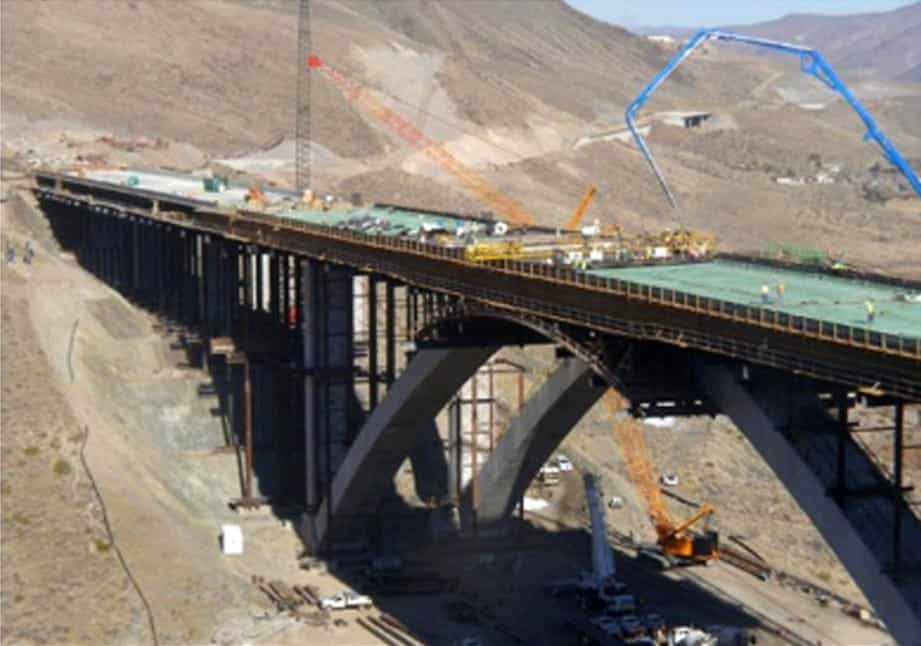












GALENA CREEK BRIDGE
Reno, NV
PROJECT DETAILS
- Location: I-580 Near Reno, Nev.
- Design Criteria:
- Design an efficient bridge that will be the longest and highest in Nevada
- Provide a design that blends with the terrain and is aesthetically pleasing
- Optimize alignment to minimize earthwork
- Incorporate maintenance and operational requirements, to address snow removal, bridge and roadway deicing, drainage and incident management.
- Owner: Nevada Department of Transportation
- Engineer: CH2M Hill
- General Contractor: Edward Kramer & Sons, Castle Rock, CO
C.C. Myers Inc., Rancho Cordova, CA
Fisher Industries, Phoenix, AZ - Epoxy-Coated Reinforcing Steel: 3,000 tons
- Total Cost: $80 million
- Length:1,722-ft-long
- Width: 62 ft
- Year Completed: Fall 2011
When completed, the twin Galena Creek Bridge on I-580 near Reno NV will be the largest concrete cathedral-arch bridge in the world, measuring over 1,725 feet with a central span of almost 690 feet. This bridge, designed by NDOT, is part of a $450-million, 8.5-mile-long I-580 Freeway Extension that will help connect Reno and Carson City. Construction on the bridge began in 2003.
The bridge consists of two parallel cast-in-place concrete arches and each arch has a width of 19.7 feet and a depth of 11.8 feet. Each box girder will carry three lanes of traffic. The structure serves as the centerpiece on a project that includes eight other cast-in-place bridges. The arched design of the project resulted from a Context Sensitive Solution format early in the process. This involved an integrated public-outreach plan to solicit public involvement and communicate openly with stakeholders about the design concept.
All concrete in the project included fly ash while the concrete in the deck also used silica fume. Over 3,000 tons of epoxy-coated reinforcing steel (ECR rebar) was used throughout the bridge, including the barrier rails, (for additional corrosion protection) due to the large amount of deicing salts used to keep the bridge accessible through the winter.